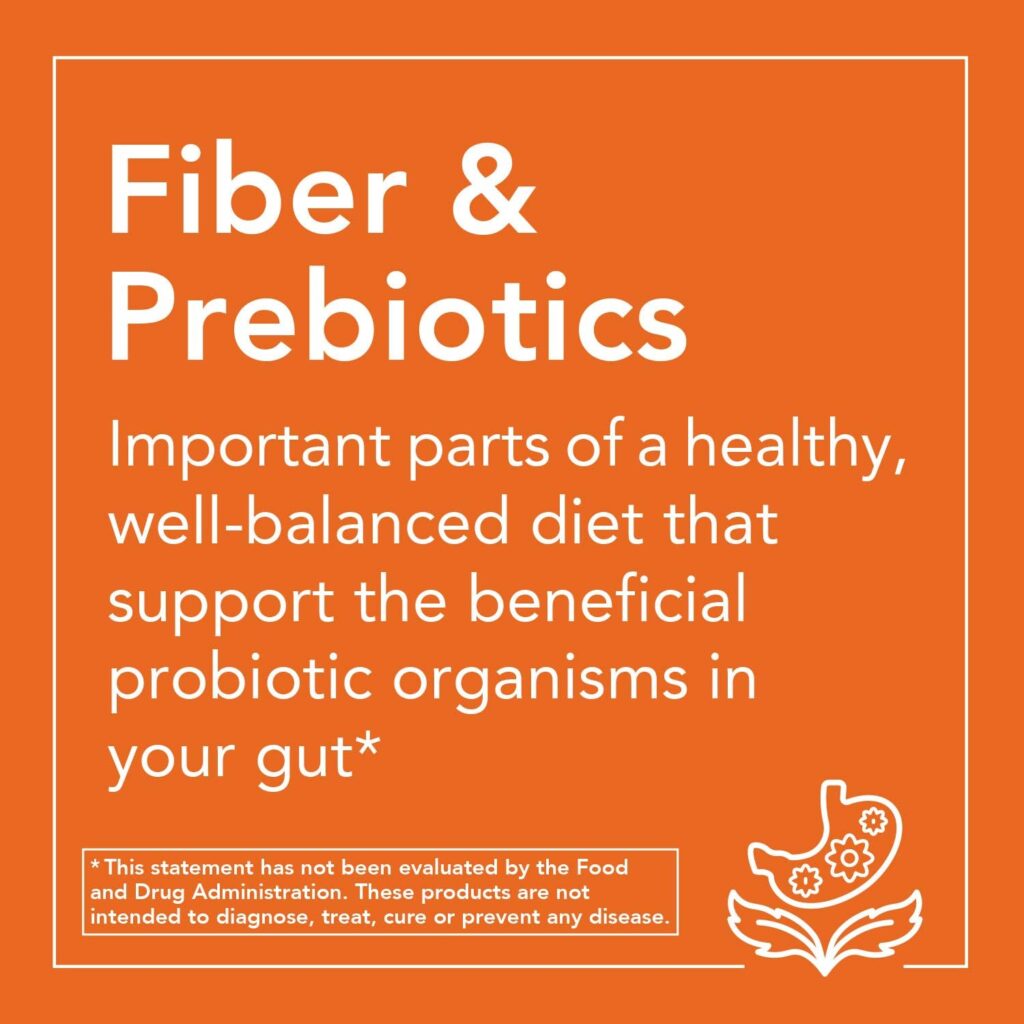
Highlights
- Fast food combines convenience, speedy service, standardization, mass production, and affordability.
- Fast food menus offer a wide range of choices to cater to different tastes and preferences.
- Fast food chains heavily invest in marketing and brand recognition.
- Fast food chains have a significant global presence, expanding into various countries and regions.
- Fast food has faced criticism for unhealthy ingredients and high calorie content, driving demand for healthier options and transparency in nutritional information.
- Fast food chains adapt to changing preferences, introducing healthier and cultural options.
- Fast foods restaurants embrace technology for improved efficiency and customer experience.
- Fast food chains face scrutiny for environmental impact, leading to adoption of sustainable practices.
Food safety knowledge is for all!

Every consumer deserves to have high quality and safe food. …Read more!

In a world where convenience is king, fast food has long been a staple in our diets. But gone are the days of greasy burgers and calorie-laden fries. The evolution of fast foods has taken a turn towards healthier alternatives, catering to the growing demand for nutritious options.
With consumers becoming more health-conscious, fast food chains have had to adapt to stay relevant.
Now, you can find an array of options that not only satisfy your cravings but also nourish your body. From salads packed with fresh vegetables to plant-based burgers that taste just like the real thing, the fast foods industry has undergone a remarkable transformation.
In this article, we will explore the journey of fast foods, from their humble beginnings to their modern-day reinvention, and how these changes have impacted our overall well-being. Get ready to discover how fast foods have come a long way, offering a guilt-free indulgence that leaves you both satisfied and nourished.
What are fast foods?
Fast food refers to a category of food that is prepared and served quickly, often in a standardized and mass-produced manner. These foods are typically available at fast food restaurants or quick-service establishments and are designed to be convenient, affordable, and easily accessible. Fast foods are known for their speed of service, often offering drive-through or take-out options.

The Negative Impact of Traditional Fast Food
Traditional fast food, with its greasy burgers, deep-fried chicken, and sugary sodas, has long been associated with a host of health problems. These meals are typically high in calories, unhealthy fats, and added sugars, leading to weight gain, increased risk of heart disease, and other chronic conditions.
The convenience and affordability of traditional fast food made it a popular choice for many, but its negative impact on health couldn’t be ignored. As consumers became more aware of the consequences of consuming such foods regularly, the demand for healthier options began to rise.
Fast food chains realized the need to change their offerings to cater to this growing demand and to stay competitive in the market. This led to the emergence of fast-casual restaurants that focused on providing healthier alternatives without compromising on taste.

Here are some of the key concerns with traditional fast foods:
- Health issues: Fast food is often high in calories, unhealthy fats, sugar, and sodium. Regular consumption has been associated with obesity, high blood pressure, heart disease, type 2 diabetes, and other diet-related health problems.
- Poor nutrition: Fast food tends to be low in essential nutrients such as vitamins, minerals, and dietary fiber. This can result in nutritional deficiencies and imbalances in the diet, leading to a variety of health problems.
- Weight gain and obesity: Fast food is often high in calories and lacks nutritional value. The overconsumption of these calorie-dense foods, coupled with sedentary lifestyles, can contribute to weight gain and obesity. Obesity is associated with numerous health risks, including cardiovascular diseases, certain types of cancer, and reduced life expectancy.
Are street vended foods same as fast foods? Read about street vended foods here.
Changing Consumer Preferences: Demand for Healthier Options
In recent years, there has been a significant shift in consumer preferences when it comes to food choices. People are becoming more conscious of their health and are actively seeking out options that align with their dietary goals.
The demand for healthier fast food options has been driven by various factors:
- Health consciousness: Increasing awareness of the negative health impacts associated with traditional fast food has motivated consumers to seek healthier alternatives. People are becoming more conscious of the importance of maintaining a balanced diet and choosing nutritious options.
- Rising chronic health issues: The prevalence of obesity, diabetes, and other diet-related health problems has spurred individuals to make more informed choices about their food intake. Consumers are actively seeking out options that align with their health goals and dietary restrictions.
- Availability of information: The widespread availability of nutritional information and educational resources has empowered consumers to make more informed decisions. People can easily access details about the nutritional content, ingredients, and sourcing practices of food products, allowing them to make healthier choices.
- Influence of social media and food bloggers: Social media platforms and food bloggers have played a significant role in promoting healthier eating habits. Influencers and bloggers often share recipes, tips, and recommendations for nutritious food options, inspiring their followers to adopt healthier lifestyles.
- Changing demographics: Younger generations, such as Millennials and Generation Z, are generally more health-conscious and prioritize sustainable and nutritious choices. As these demographics have significant purchasing power, their preferences have shaped the market and influenced the food industry to offer healthier options.
What healthier options, you may ask!

Buy NOW Supplements, Psyllium Husk Caps 500 mg, Non-GMO Project Verified, Natural Soluble Fiber, Intestinal Health*, 200 Veg Capsules from Amazon:
Click here to go to Amazon, https://amzn.to/3vt870B

Consumers are requesting various categories of healthier options in the food industry. Here are some of the key categories and a brief explanation of each:
- Plant-based alternatives: There is a growing demand for plant-based options among consumers looking to reduce their meat consumption or follow a vegetarian or vegan lifestyle. Plant-based alternatives include burgers, sausages, chicken substitutes, and dairy-free milk, cheese, and ice cream made from plant sources like soy, peas, or nuts.
- Whole and minimally processed foods: Consumers are seeking foods that are less processed and closer to their natural state. This category includes whole grains, fresh fruits and vegetables, lean proteins, nuts, and seeds. These foods are generally higher in fiber, vitamins, minerals, and other beneficial nutrients.
- Low-calorie options: Many individuals are watching their calorie intake as part of their health and weight management goals. Low-calorie options include meals or snacks with reduced calorie content, often achieved through portion control, the use of lighter ingredients, or cooking methods that minimize added fats and sugars.
- Gluten-free and allergen-friendly choices: Consumers with gluten intolerance or allergies to common food allergens, such as nuts, dairy, or soy, seek out options that cater to their dietary needs. These choices provide alternatives that are free from gluten or other allergens, making them safe and suitable for individuals with specific dietary restrictions.
- Organic and sustainably sourced ingredients: Increasingly, consumers are concerned about the environmental impact of their food choices. They are looking for options made with organic ingredients grown without synthetic pesticides or fertilizers. Additionally, sustainably sourced foods that prioritize fair trade practices and support local or eco-friendly farming methods are gaining popularity.
- Customizable and made-to-order meals: Consumers value the ability to customize their meals to suit their preferences and dietary requirements. This includes options to choose specific ingredients, portion sizes, or cooking methods. Customizable menus allow consumers to have more control over their food choices and accommodate their individual needs.
- Transparency and food traceability: Consumers are increasingly interested in knowing where their food comes from and how it is produced. They seek transparency in labeling, information about sourcing practices, animal welfare standards, and any ethical or sustainable initiatives undertaken by food companies.

The Emergence of Fast-Casual Restaurants
The emergence of fast-casual restaurants has been a game-changer in the fast food industry. These establishments offer a middle ground between traditional fast food and sit-down restaurants, providing quick service with higher-quality ingredients.
Fast-casual restaurants focus on using fresh, locally sourced ingredients and offer customizable options to cater to individual preferences. This allows customers to have control over what goes into their meals, making it easier to accommodate dietary restrictions and preferences.
These establishments also prioritize transparency, providing customers with detailed nutritional information about their menu items. This helps consumers make more informed choices and align their fast food indulgences with their health goals.
The success of fast-casual restaurants has shown that there is a market for healthier fast food options. Consumers are willing to pay a premium for meals that are not only convenient but also nutritious and satisfying.

Buy NOW Supplements, Psyllium Husk Caps 500 mg, Non-GMO Project Verified, Natural Soluble Fiber, Intestinal Health*, 200 Veg Capsules from Amazon:
Click here to go to Amazon, https://amzn.to/3vt870B

Here are some key features and factors contributing to the emergence and popularity of fast-casual restaurants:
- High-quality ingredients: Fast-casual restaurants typically prioritize the use of fresher, higher-quality ingredients compared to traditional fast food establishments. They often source locally or focus on sustainably produced ingredients, catering to the increasing consumer demand for healthier and more responsibly sourced food.
- Customizable options: Fast-casual restaurants often offer a build-your-own or customizable approach to meal preparation. Customers can choose from a range of ingredients, toppings, and sauces to create a personalized meal. This customization allows individuals to accommodate specific dietary preferences, allergies, or restrictions, promoting a more tailored and healthier dining experience.
- Fresh preparation: Fast-casual restaurants often emphasize on-site food preparation and cooking. Meals are typically made to order or assembled in front of customers, highlighting the use of fresh ingredients and minimizing the reliance on pre-packaged or pre-cooked items. This focus on freshness and made-to-order meals enhances the perception of healthier and higher-quality food.
- Transparency and ingredient sourcing: Many fast-casual restaurants emphasize transparency by providing information about ingredient sourcing, nutritional details, and preparation methods. This transparency appeals to health-conscious consumers who value knowing where their food comes from and what they are consuming, contributing to a sense of trust and informed decision-making.
- Trend towards healthier options: Fast-casual restaurants have capitalized on the growing demand for healthier food choices. They often offer a variety of nutritious options such as salads, grain bowls, lean proteins, and vegetarian/vegan alternatives. By catering to health-conscious individuals seeking balanced meals, fast-casual restaurants have gained popularity as a healthier alternative to traditional fast food.
- Enhanced dining experience: Fast-casual restaurants aim to provide a more elevated and comfortable dining experience compared to fast food chains. They often feature modern and inviting interior designs, with options for dine-in or takeout. Some establishments may offer additional amenities like self-serve beverage stations, digital ordering systems, or partnerships with food delivery services, enhancing convenience and customer satisfaction.
- Technological integration: Fast-casual restaurants have embraced technology to streamline operations and improve the overall dining experience. This includes mobile ordering apps, self-ordering kiosks, online delivery platforms, and loyalty programs. Technological integration enhances speed, efficiency, and convenience, catering to the preferences of busy consumers seeking quick, yet satisfying meals.
Fast Food Chains Adapting to Healthier Alternatives
In response to changing consumer demands, fast food chains have had to adapt and reinvent their menus. Many have introduced healthier alternatives to their traditional offerings, incorporating fresh ingredients, lean proteins, and whole grains.
Burgers made with plant-based patties, salads loaded with colorful vegetables, and grilled chicken options have become increasingly common on fast food menus. These alternatives provide consumers with guilt-free choices that are lower in calories, saturated fats, and sodium.
Fast food chains have also made efforts to reduce portion sizes and offer more balanced meal options. Combos that include salads or fruit instead of fries, and beverages with lower sugar content have become more prevalent.
In addition to healthier food options, fast food chains have also started to offer alternatives to sugary sodas, such as flavored water or unsweetened iced tea. This shift reflects the growing awareness of the negative health effects of excessive sugar consumption.


Buy NOW Supplements, Psyllium Husk Caps 500 mg, Non-GMO Project Verified, Natural Soluble Fiber, Intestinal Health*, 200 Veg Capsules from Amazon:
Click here to go to Amazon, https://amzn.to/3vt870B

Fast Food Marketing Strategies for Healthier Options
The marketing strategies employed by fast food chains have also evolved to promote their healthier options. In an effort to attract health-conscious consumers, these chains focus on highlighting the nutritional benefits of their menu items.
Advertisements now emphasize the use of fresh ingredients, low-fat cooking methods, and the absence of artificial additives. Fast food chains also collaborate with nutritionists and dietitians to provide expert advice on making healthier choices.
Social media platforms have become an essential tool for fast food chains to engage with their customers and promote their healthier offerings. Through mouthwatering food photography, recipe videos, and interactive campaigns, chains can showcase the delicious and nutritious options available to consumers.
The use of influencers and brand ambassadors who advocate for healthy eating further amplifies the message. By partnering with fitness enthusiasts and wellness experts, fast food chains can reach a wider audience and position themselves as providers of healthier fast food choices.
The Role of Technology in the Evolution of Fast Food
Technology has played a significant role in driving the evolution of fast food. Mobile apps and online ordering systems have made it easier than ever for consumers to access healthier options from their favorite fast food chains.
These platforms allow customers to customize their orders, making it simpler to accommodate dietary preferences and restrictions. They also provide nutritional information and allergen warnings, empowering consumers to make informed choices.
Additionally, technology has facilitated the rise of food delivery services, making healthy fast food options more accessible to a wider range of people. With a few taps on their smartphones, customers can have a nutritious meal delivered right to their doorstep.
Fast food chains have also embraced technology to streamline their operations and reduce waste. Automated systems for inventory management and food preparation help ensure that fresh ingredients are used efficiently and minimize food waste.
Find out how out can start an e-business in the food industry!
The Future of Fast Food: Sustainability and Plant-Based Options
As the demand for healthier fast food options continues to grow, sustainability and plant-based alternatives are becoming increasingly important. Fast food chains are recognizing the need to address environmental concerns and offer options that are both nutritious and eco-friendly.
Plant-based burgers and other meat substitutes have gained popularity in recent years, appealing to vegetarians, vegans, and those looking to reduce their meat consumption. These alternatives are not only better for the environment but also offer health benefits, as they are typically lower in saturated fats and cholesterol.
Sustainability efforts extend beyond the menu items themselves. Fast food chains are taking steps to reduce their carbon footprint by implementing energy-efficient practices, using eco-friendly packaging, and supporting local farmers and suppliers.
Read more about sustainable food packaging!
The future of fast food lies in finding innovative ways to balance convenience, taste, and nutrition while also considering the impact on the planet. By embracing sustainability and offering plant-based options, fast food chains can cater to the evolving needs and values of their customers.

Buy NOW Supplements, Psyllium Husk Caps 500 mg, Non-GMO Project Verified, Natural Soluble Fiber, Intestinal Health*, 200 Veg Capsules from Amazon:
Click here to go to Amazon, https://amzn.to/3vt870B

Here is a list of common plant-based options:
- Tofu: Tofu is made from soybeans and is a versatile ingredient that can be used in various dishes, such as stir-fries, curries, and salads. It is a good source of protein and is often used as a meat substitute.
- Tempeh: Tempeh is a fermented soybean product that has a nutty flavor and a firm texture. It can be marinated, grilled, or used in sandwiches, stir-fries, and salads as a protein-rich alternative.
- Seitan: Seitan, also known as wheat gluten, is made from gluten protein extracted from wheat. It has a chewy texture and is often used as a meat substitute in dishes like stir-fries, stews, and sandwiches.
- Legumes: Legumes, such as lentils, chickpeas, black beans, and kidney beans, are excellent sources of protein and fiber. They can be used in various dishes, including soups, stews, salads, and plant-based burgers.
- Quinoa: Quinoa is a grain-like seed that is a complete protein, meaning it contains all nine essential amino acids. It can be used as a base for salads, added to soups, or used as a side dish.
- Nuts and nut butters: Nuts, such as almonds, walnuts, and cashews, are nutrient-dense and can be consumed as snacks or used in various recipes. Nut butters, like peanut butter or almond butter, are popular spreads and ingredients in smoothies, baked goods, and sauces.
- Plant-based milk alternatives: There are several plant-based milk options available, including almond milk, soy milk, oat milk, and coconut milk. These alternatives can be used in place of dairy milk in recipes, cereals, coffee, and smoothies.
- Plant-based burgers: Plant-based burger patties, such as those made from soy, pea protein, or mushrooms, have become increasingly popular. They provide a meat-like texture and flavor and are often found in fast food chains and restaurants.
- Veggie noodles: Spiralized vegetables, like zucchini, sweet potatoes, or carrots, can be used as a substitute for traditional pasta. These veggie noodles are lower in calories and carbohydrates and can be served with various sauces or in stir-fries.
- Plant-based dairy alternatives: Along with milk alternatives, there are also plant-based alternatives for cheese, yogurt, and ice cream. These options are typically made from nuts, soy, or coconut and provide alternatives for those avoiding dairy products.
- Leafy greens: Spinach, kale, Swiss chard, and other leafy greens are packed with nutrients and can be used in salads, stir-fries, smoothies, or as a side dish.
- Mushrooms: Mushrooms offer a meaty texture and are often used as a substitute in dishes like burgers, stews, and stir-fries. Portobello mushrooms can be grilled and used as a burger patty.
- Whole grains: Brown rice, quinoa, bulgur, barley, and farro are examples of whole grains that can be used as a base for salads, pilafs, bowls, or as a side dish. Whole grains are rich in dietary fiber.
Fast Food Industry Challenges and Opportunities
While the evolution of fast foods towards healthier alternatives presents numerous opportunities, the industry also faces challenges.
Challenges:
- Health concerns: The fast food industry has been under scrutiny due to concerns about the negative health impacts of high-calorie, processed foods. Consumers are increasingly demanding healthier options, which presents a challenge for traditional fast food chains to adapt their menus and ingredients to meet these changing preferences.
- Sustainability and environmental impact: As environmental consciousness grows, there is an increasing expectation for businesses, including fast food establishments, to address sustainability concerns. Issues such as packaging waste, carbon footprint, and responsible sourcing of ingredients pose challenges for the industry to adopt more sustainable practices.
- Rising labor costs: The fast food industry often relies on low-wage workers to keep prices competitive. However, rising labor costs and demands for higher wages are pressuring businesses to reassess their labor models and find innovative ways to maintain profitability.
- Competition from fast-casual and healthier alternatives: The emergence of fast-casual restaurants and the demand for healthier options have created increased competition for traditional fast food chains. Fast-casual establishments often offer higher-quality ingredients, customizable menus, and a more elevated dining experience, which can draw customers away from traditional fast food options.
Opportunities:
- Embracing healthier options: The shift towards healthier eating habits presents an opportunity for fast food chains to expand their menus to include more nutritious choices. By offering salads, grilled options, fresh ingredients, and plant-based alternatives, fast food chains can cater to health-conscious consumers and tap into the growing market for healthier fast food.
- Technological innovation: Technology can enhance the fast food experience through online ordering, mobile apps, self-service kiosks, and delivery platforms. Embracing technology not only improves convenience for customers but also streamlines operations and provides valuable data for targeted marketing and customer insights.
- Menu customization and personalization: Providing customers with the ability to customize their meals and accommodate dietary preferences is becoming increasingly important. Fast food chains can leverage this trend by offering a wide range of ingredients, sauces, and toppings to create personalized meals, appealing to individual tastes and dietary needs.
- Sustainability initiatives: Implementing sustainable practices can be a competitive advantage for fast food chains. This includes adopting eco-friendly packaging, reducing food waste, sourcing locally, supporting fair trade, and investing in renewable energy. Demonstrating a commitment to sustainability can attract environmentally conscious consumers and strengthen brand reputation.
- International expansion: The fast food industry has significant growth potential in emerging markets where consumer demand for convenience and Western-style dining experiences is increasing. Expanding into these markets presents opportunities for fast food chains to tap into new customer bases and expand their global footprint.
- Marketing and brand differentiation: Effective marketing strategies and brand differentiation are crucial for standing out in a competitive market. Fast food chains can leverage storytelling, social media, influencer partnerships, and community engagement to connect with consumers and build a loyal customer base.

Buy NOW Supplements, Psyllium Husk Caps 500 mg, Non-GMO Project Verified, Natural Soluble Fiber, Intestinal Health*, 200 Veg Capsules from Amazon:
Click here to go to Amazon, https://amzn.to/3vt870B

Conclusion: The Ongoing Transformation of the Fast Food Industry
The evolution of fast foods from greasy burgers to healthier alternatives is a testament to the changing needs and preferences of consumers. The demand for nutritious options has driven fast food chains to adapt and reinvent their menus, offering guilt-free indulgences that leave customers both satisfied and nourished.
With the emergence of fast-casual restaurants, the adoption of technology, and a focus on sustainability and plant-based options, the fast food industry is undergoing a remarkable transformation. While challenges remain, the industry has recognized the importance of catering to health-conscious consumers and is actively working towards providing accessible and affordable fast food choices.
As consumer awareness and demand for healthier fast foods continue to grow, the future of the industry lies in finding innovative ways to meet these needs while also considering the impact on the planet. The ongoing transformation of the fast food industry is an exciting journey that promises to make indulging in fast food a guilt-free and nourishing experience.
Our Blog ↗
Read the latest from our blog
Ask a Question ↗
Ask a question and get answers from our community
Give Feedback ↗
We value your feedback.

